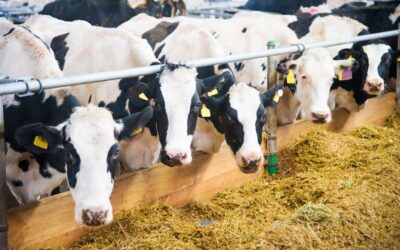Big Uses for Big Data
What is big data and what does it really mean for the average dairy facility? Most production plants hear the term and think that it doesn’t really apply to them. But, the reality is that almost everyone in the dairy industry is already using data to drive decisions every single day. And if they’re not, they should be.
To highlight some of the various ways big data can benefit your operation and how this information applies to dairy, we asked our customers how they’re using their data.
Shrink Calculations and Standard Operating Procedures
Although data analysis and data mining are typically reserved for IT and accounting roles, the impact they can play on the plant floor can be significant. Recovering an additional 10% of shrink or improving yield percentages by just a couple of points can mean hundreds of thousands of dollars – if not more.
For example, silo reconciliation can be a mundane process. Some plants do this daily, others weekly, and still others that put this off until the end of the month when they are working on the reports for the Market Administrator. The plants that do this daily have an easier time tracking their issues and do not find themselves “backing in” to a number. In following this procedure by each component and not just by the total volume, plants have the data to reconcile which components are paid out to farms and suppliers compared to what is actually ending up in the silos. Although this may not be a large discrepancy for everyone, you may be surprised at how quickly the amount of money adds up at the end of each month.
In another example, we recently talked with a customer who quickly saw their yields increasing after their new plant manager worked through data that was already available in our reports. The reports revealed a discrepancy between the expected and actual yields in a couple of production lines. After taking a closer look, the plant manager discovered that one of the three lines was creating nearly double the trim and scrap of the other two. After the problem was pinpointed, it was then able to be quickly remedied.
Procurement Analysis
Big data can also come into play on the procurement side, specifically with producer milk, purchased milk, and in the buying and selling of special mixes or UF milk.
For example, a high volume manufacturer who takes in over 100 trucks a day was experiencing issues with hauler wait times, loads left in the yard, and even milk spoilage. Determining the root cause of these problems was the first step, especially since they were not even running at full capacity.
They initially analyzed the amount of time it took for a truck to arrive, unload, and eventually depart. Next, they turned their attention to haulers and individual drivers. After carefully tracking these for a month and still not seeing any improvement , they turned to their plant staff, who began pulling data immediately. The data quickly revealed that too many trucks were showing up within about a four hour window almost every day. An even deeper look found that about a dozen haulers were showing up nearly three hours early for their deliveries and setting everyone back – angering other drivers who were there on time and causing a backlog.
What Now?
“Big Data” is just as applicable to the dairy industry as it is in the tech world. By looking at data you’re already capturing, patterns can begin to emerge – but only if you know where to look for them. But, you don’t have to be a fortune 500 company to cash in on the concept. Odds are you’re already collecting the data – now it’s time to analyze it.


